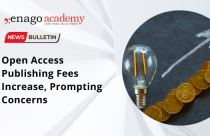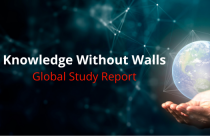Can Open Access Become Sustainable?

The number of open access publications has increased considerably during the last few years resulting from improved internet usage and the wish to make science more transparent and accessible to the public. This has led to many discussions regarding the benefits and challenges of the open access publishing model. This model allows readers to access academic papers without having to pay a subscription fee.
Open access can certainly improve the visibility and impact of scientific results. It may also offer many other benefits for researchers and the community. However, there are still several challenges that are preventing it from growing further. In addition to the proliferation of predatory journals, which has led to quality problems involving many open-access titles, the funding question also remains a major problem.
The Cost of Science Publishing
In the last few years, some of the major publishers were repeatedly accused of wanting to make money with little effort. However, the truth is that high-quality academic papers cannot be published for free, and the costs of scientific publishing are, of course, in addition to the costs of doing the research itself, so they must be considered separately. In general, the publishing process involves several steps including acquiring and managing submissions; managing peer review; editing the text, tables, and figures of submitted papers; preparing the final articles in an appropriate format; publishing and disseminating journals; coordinating marketing and social media activities; archiving, and so on.
One of the most important contributions made by publishers, from an access point of view, is the development and maintenance of platforms to support researchers in many ways. For example, mobile technology, article enhancement, social networking, legal support, alerts and citation notifications, reference analysis, text-mining tools, research performance measurement tools, and others.
In addition, most journals are now available electronically. Therefore, publishers must cover all the costs related to developing and providing an appropriate infrastructure for online publication and archiving. Online articles get created, digitized, organized, tagged, archived, and distributed by the publishers, and all this costs money. Still, it seems to be easier to attack them than to actually look at what they provide. In fact, most publishers are willing to expand access to publicly funded research. However, they all agree that this can only become possible as part of a financially viable model.
Who Pays?
If we want to make articles available without charging a subscription fee, then we will have to find sustainable ways to cover publication costs. There are already several models being considered: In some cases, universities or societies support small publishers, allowing their journals to be free and open access. Most grants allow the usage of funds for covering article processing charges (APCs) in both open access and hybrid journals. Some publishers even agree to reduce/waive the publication costs for researchers from developing countries or members of particular societies.
Pre- or post-print archives and repositories, such as arXiv or Wellcome Open Research, are also a good option. However, individual organizations support both these platforms. Moreover, relying on a single entity always implies a certain amount of risk. Cooperative funding helps avoid this problem by engaging in partnerships with several organizations. The Open Library of Humanities operates under this model, which seems to be less risky, although finding suitable partners might be challenging.
Involving Societies, Institutions, and Libraries
In 2014, a new financial model was proposed to support open access. Its basis depends on payments made by universities and other societies or institutions that benefit from research that is getting published. The payments, which depend on the number of students, faculty members, researchers, or scholars working at the different institutions, go into a centrally managed fund and can then help to support the distribution, access, and archiving of manuscripts and the development and maintenance of a suitable and modern publishing infrastructure.
Another approach is the pay what you can afford (PWYCA) model for APCs. In this approach, the journal does not charge a fixed APC but has a suggested APC instead. The authors are then welcome to pay any amount that they can afford. The journal ecancermedicalscience is using this new approach since 2014.
Despite all the benefits of open access, the lack of a sustainable business model has slowed down its growth. However, several interesting ideas are now under discussion. Therefore, many academics are now optimistic about the future of this very popular publishing form.










I have come to understand that the open access model is aimed at promoting access to the academic journals in the academic community and the public generally. How would authors protect themselves from predatory journals that hide under the pretext of open access?
Hi Jack,
There are a number of methods for authors to protect themselves from predatory journals. You can read some of our resources listed below to get a better idea on how to avoid predatory journals.
1) How to Identify Predatory/Fake Journals: https://www.enago.com/academy/how-to-identify-predatory-fake-journals/
2) Identifying Predatory Journals Using Evidence-based Characteristics: https://www.enago.com/academy/identifying-predatory-journals-using-evidence-based-characteristics/
Alternatively, you can also post your question on our Q&A forum: https://www.enago.com/academy/qna/